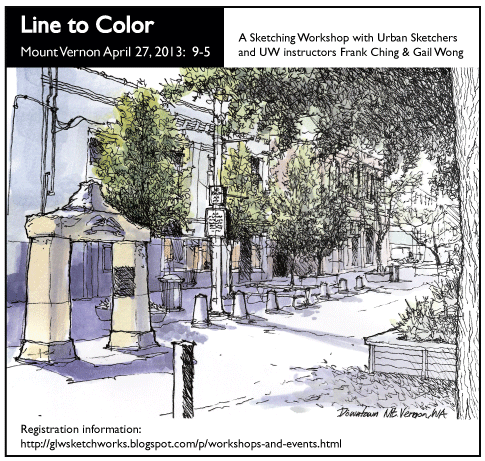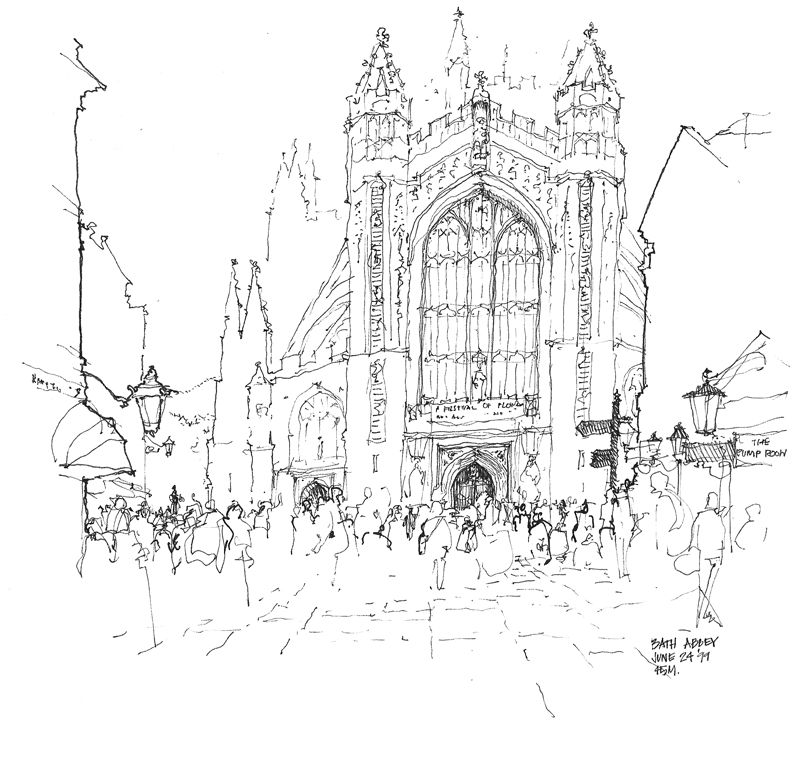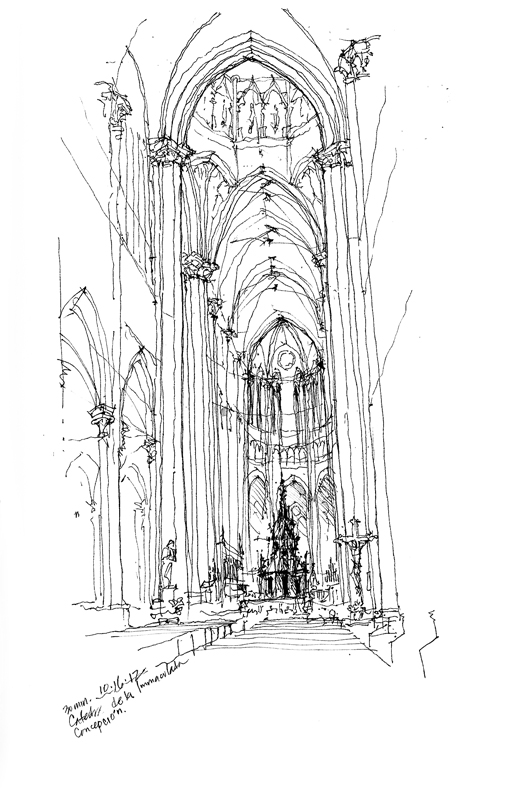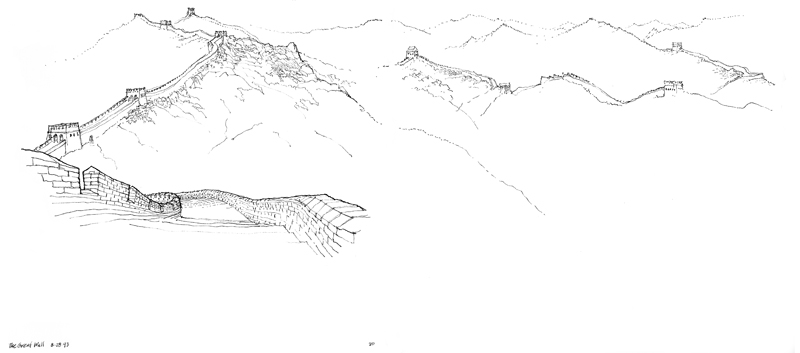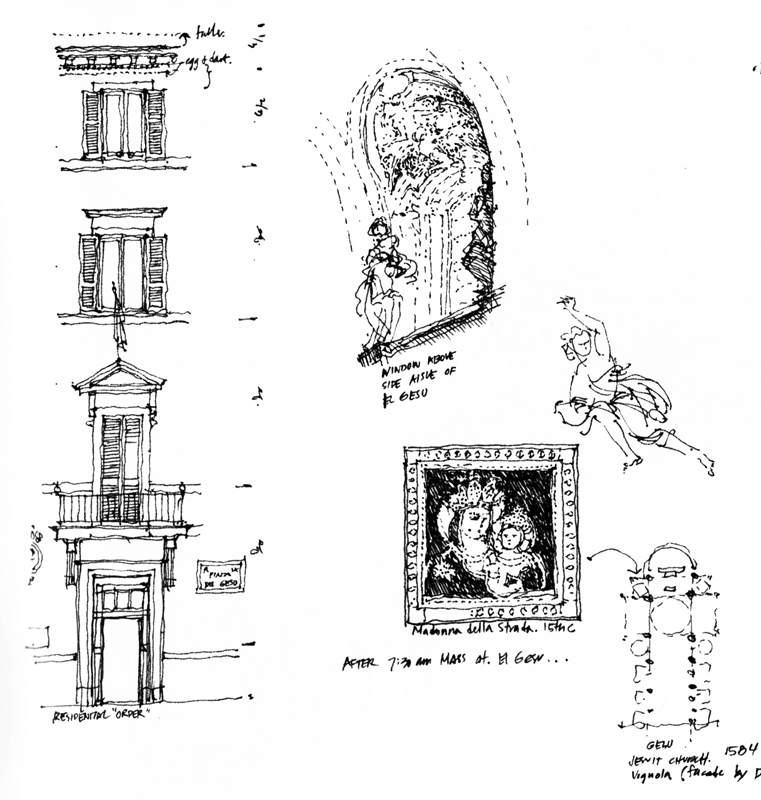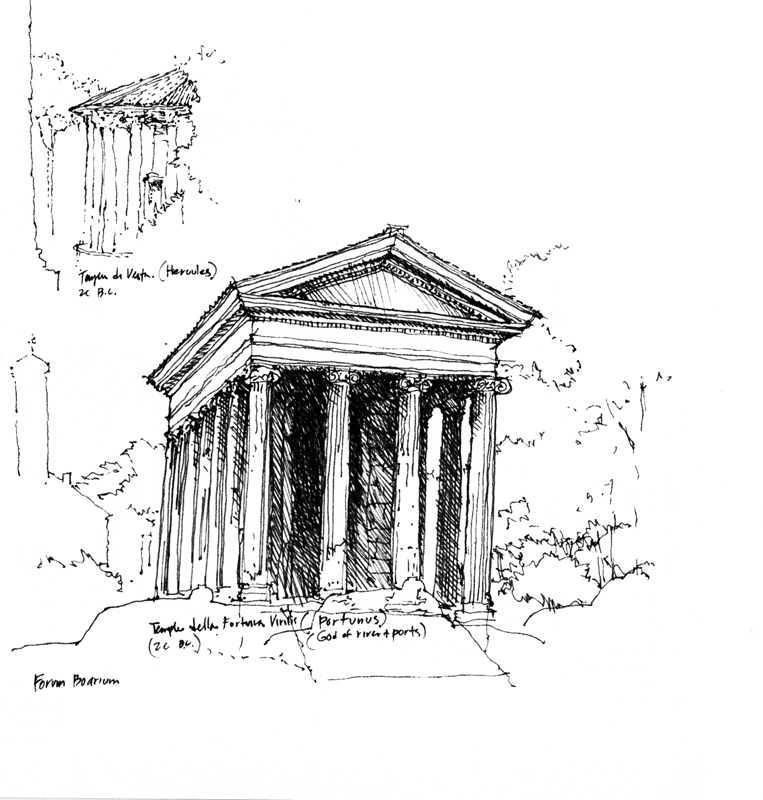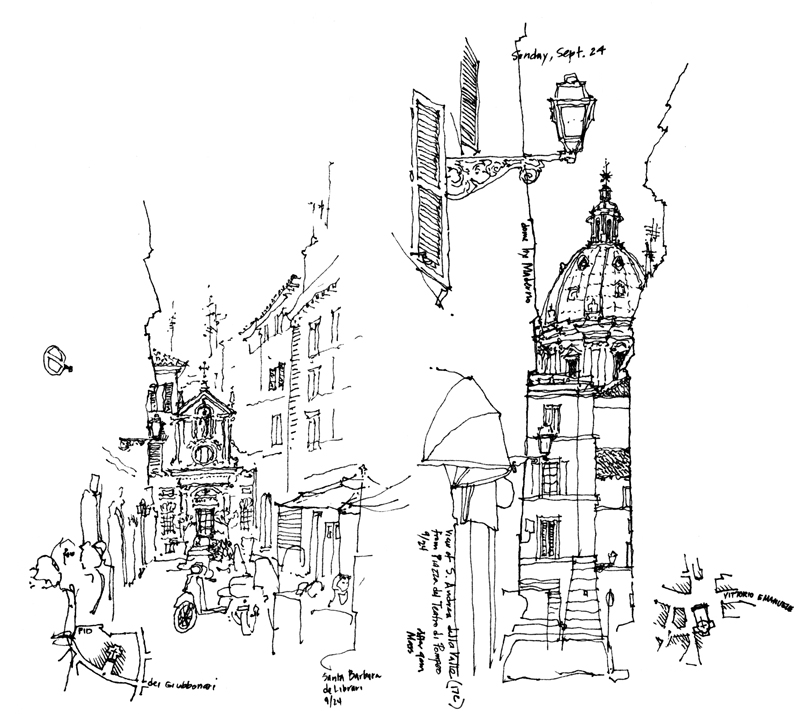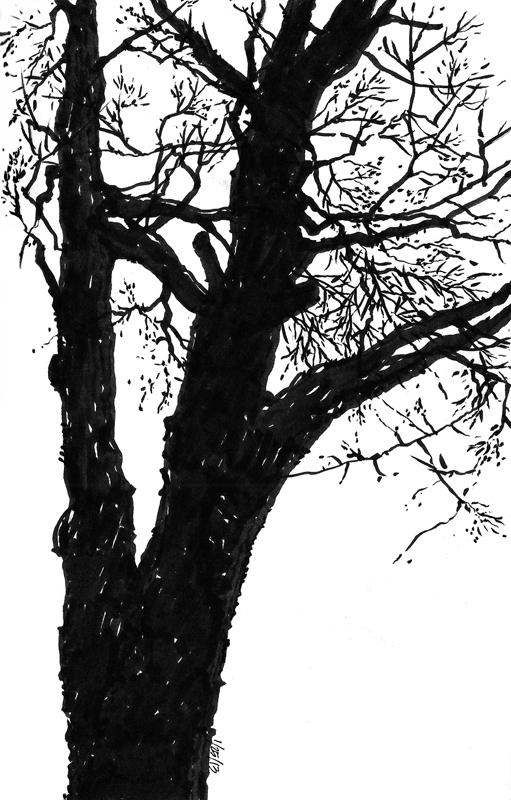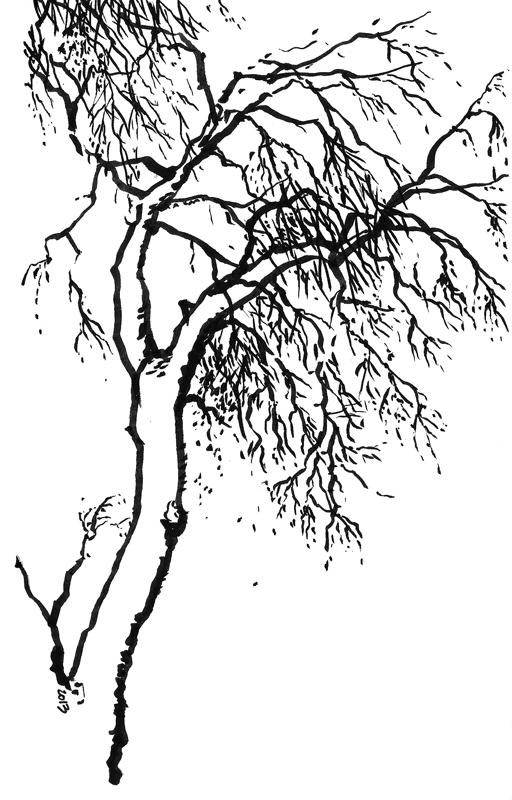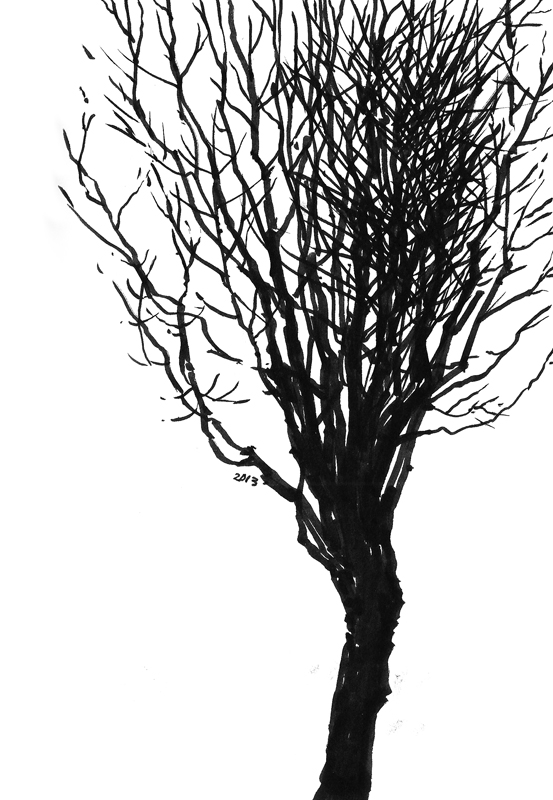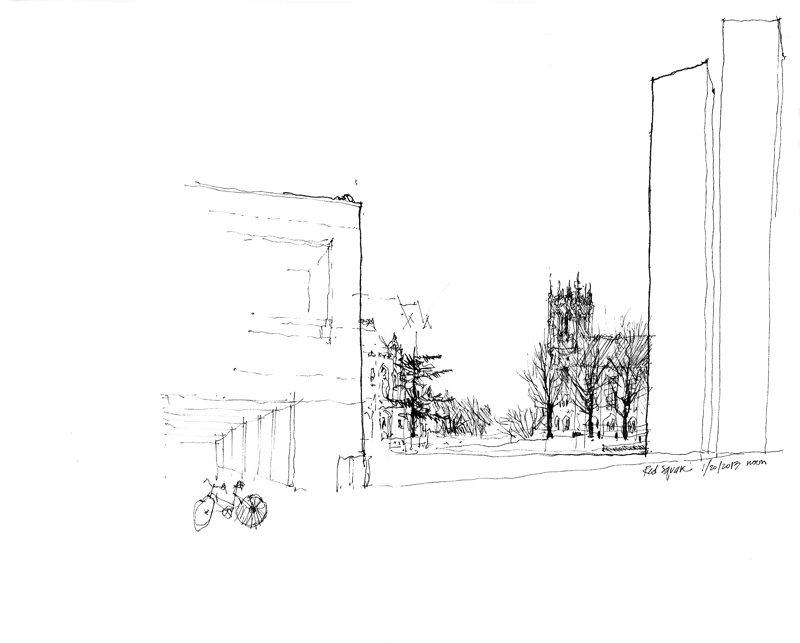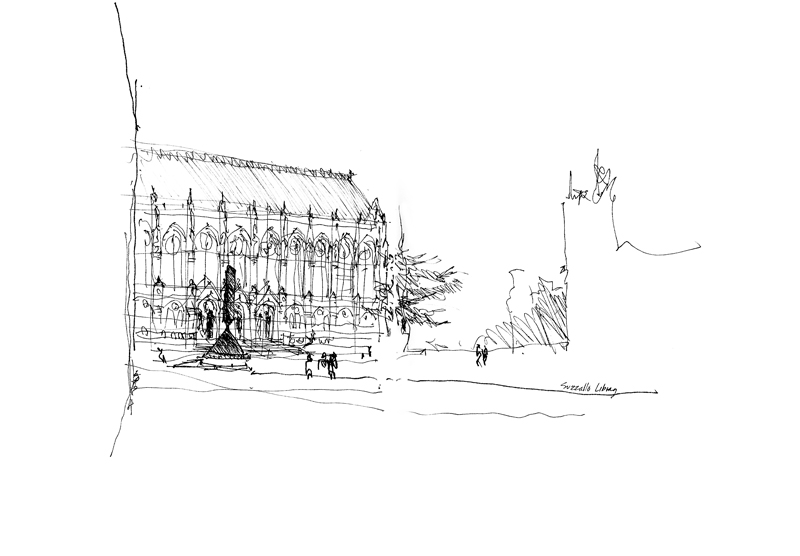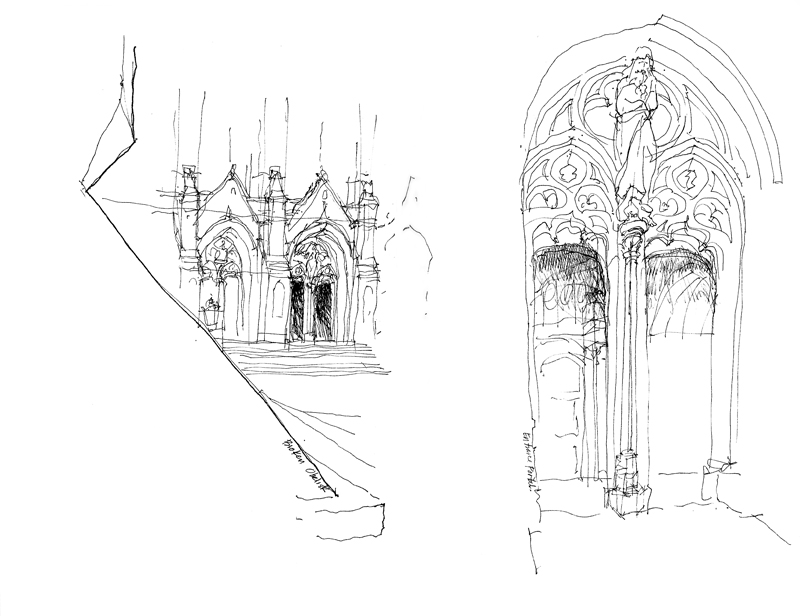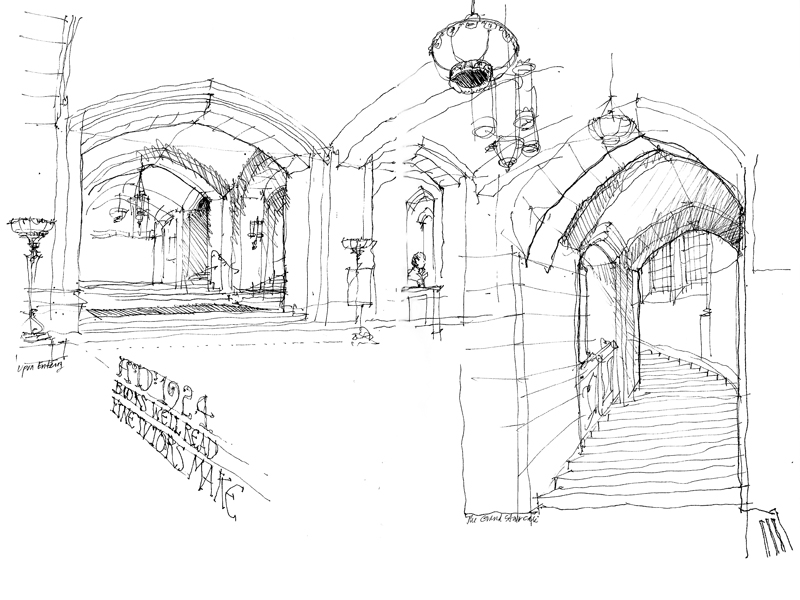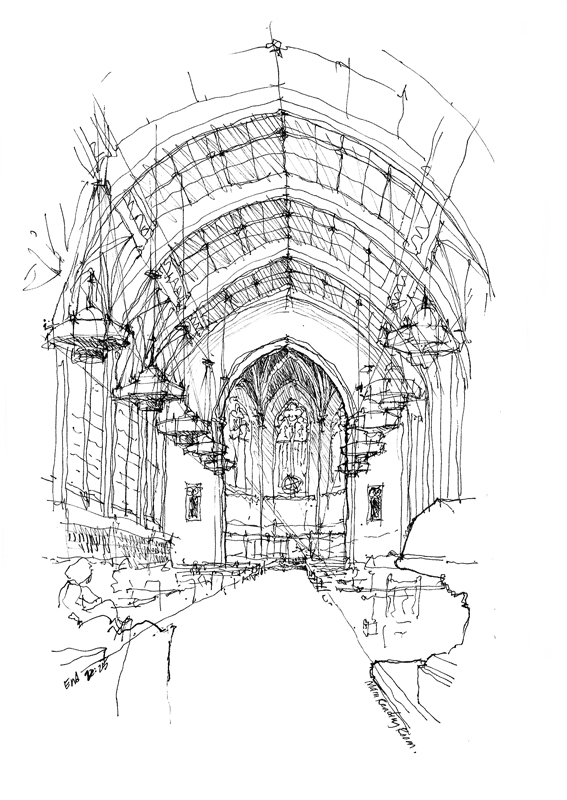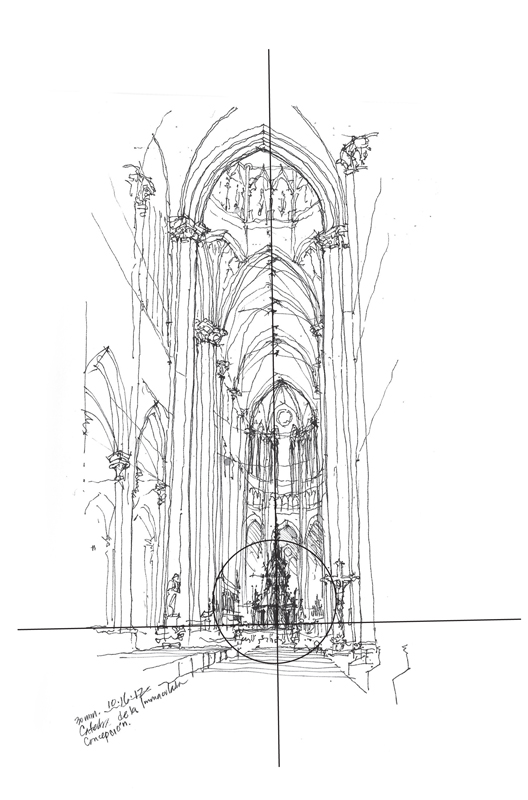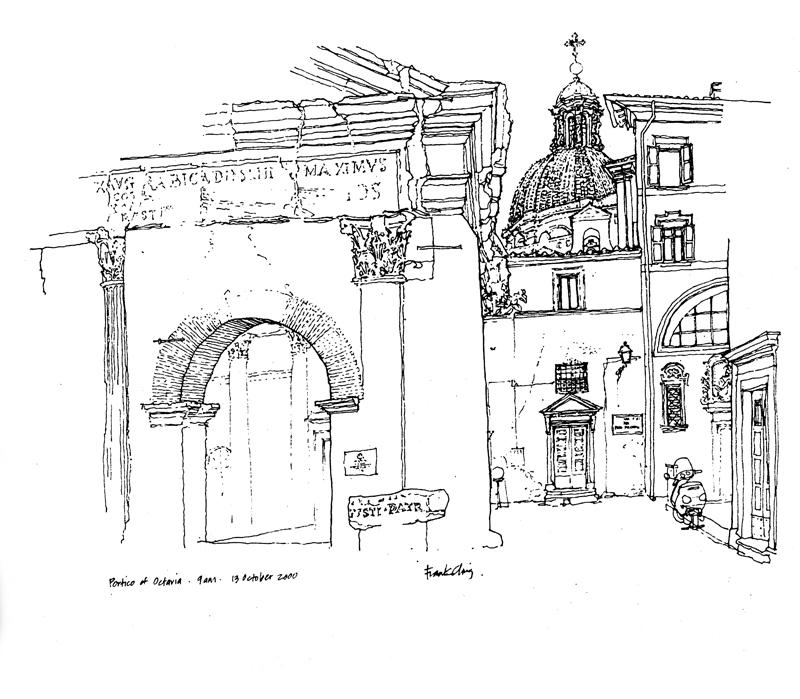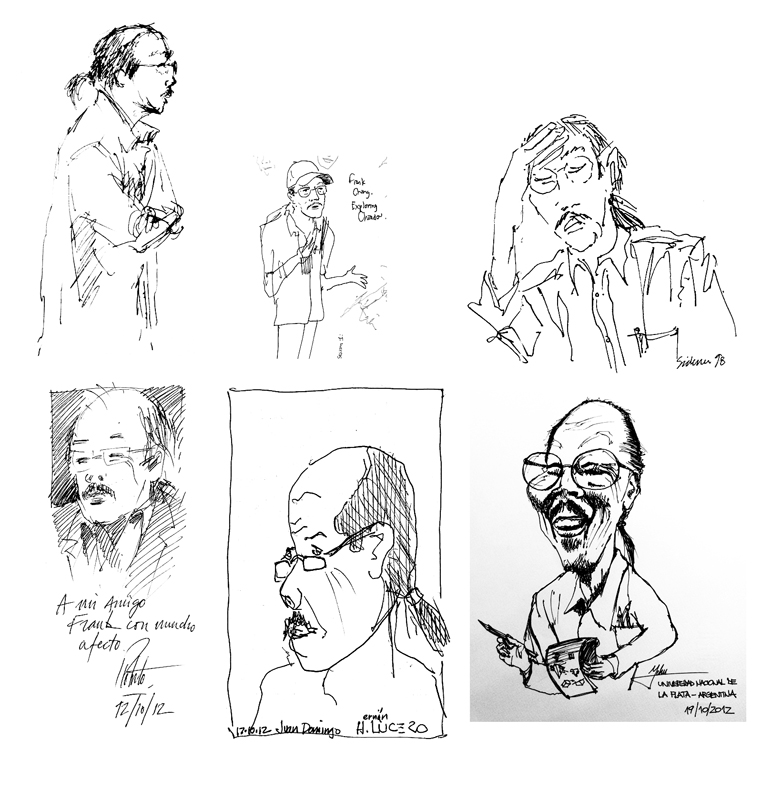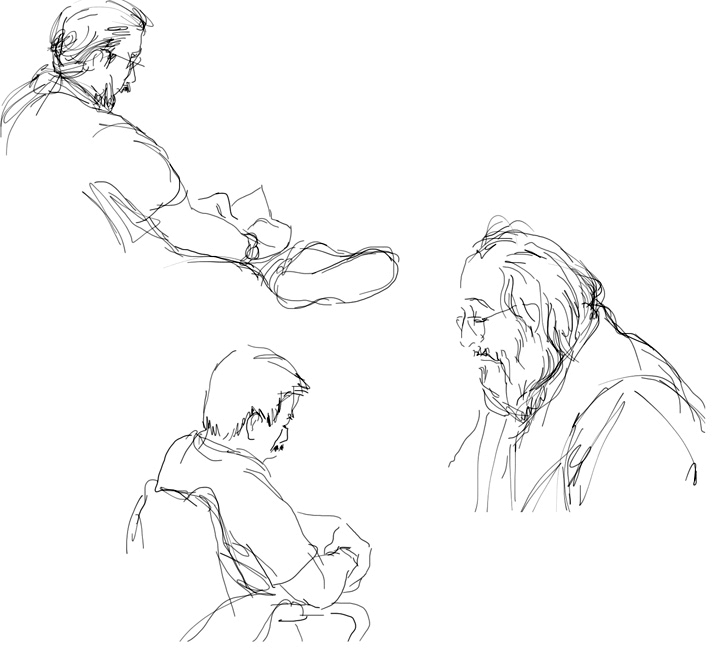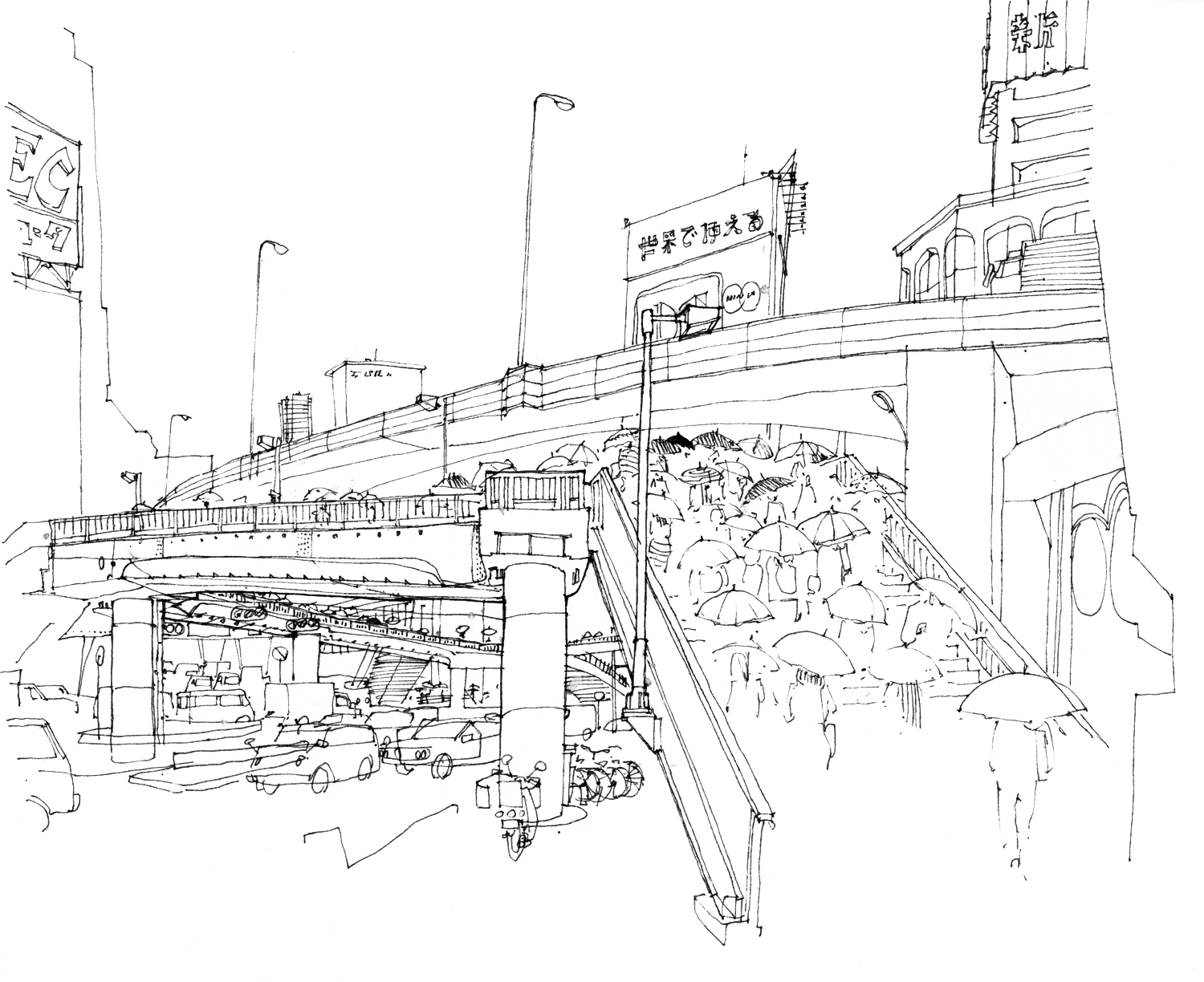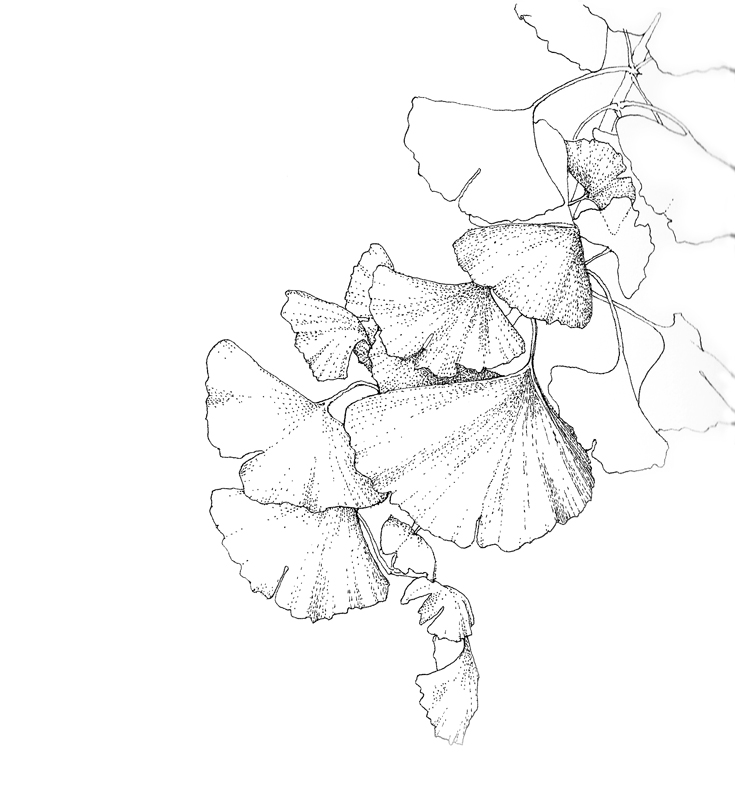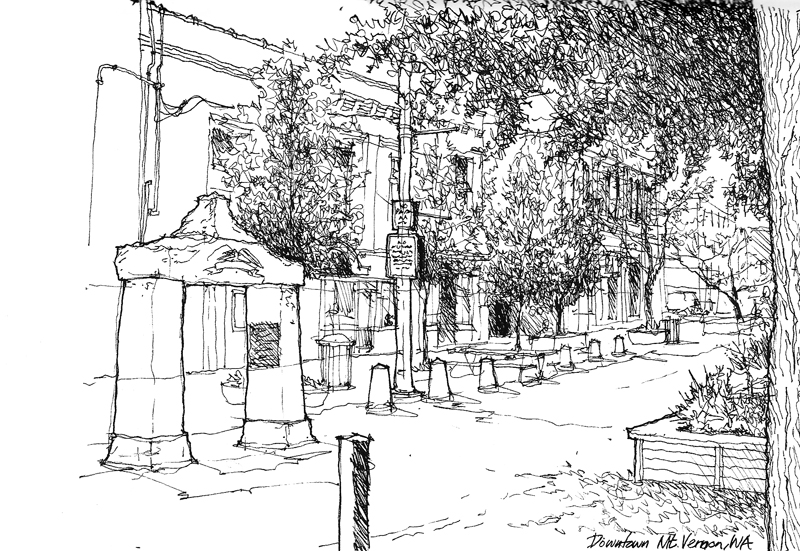
I did this sketch to help publicize a one-day workshop Gail Wong and I will be offering in Mt. Vernon on Saturday, April 20th. Mt. Vernon is an enchanting small town in Skagit County north of Seattle and the Mt. Vernon Downtown Association is hosting the event.
Full disclosure: Due to constraints of time and weather I drew this scene from a digital photograph that was sent to me. I soon realized that drawing from a photo can actually be more difficult than drawing on location. In a 3D environment, we are able to perceive much more than in a 2D photograph. We can shift our gaze, if necessary, to uncover certain details or to see more clearly things that might be hidden or obscured. And we are free to interpret the 3-dimensional information before us. But in a photograph, everything is frozen, including ambiguities that have to be resolved.
Another note: The Namiki Falcon fountain pen is known for its flexible nib. While it is a joy to draw with, I rarely carry the pen for fear of losing it. But since I was in my home office, I took the opportunity to use it for this sketch. The Namiki Falcon is not inexpensive but still it is a reasonably priced introduction to fine quality fountain pens. Highly recommended.

